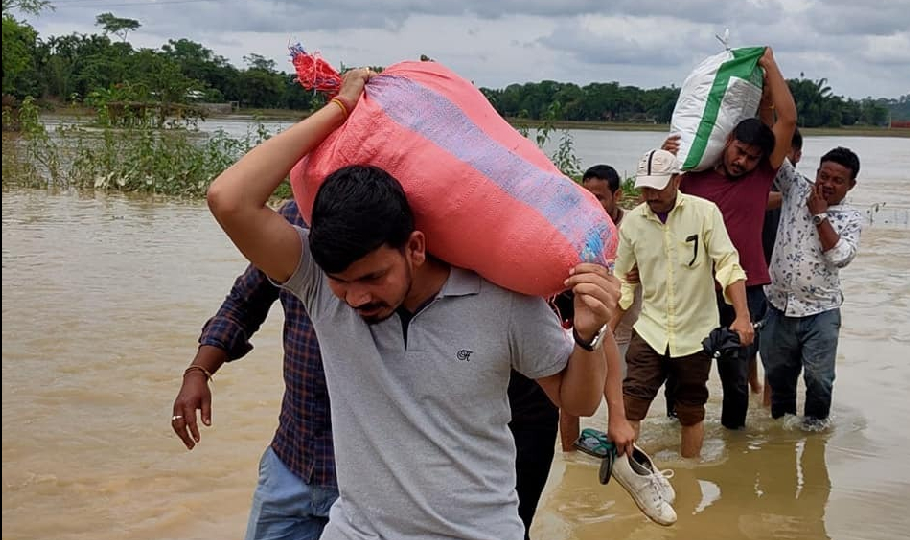
Assam floods: 121 dead, 25 lakh affected in northeastern state
Over 25 lakh people have been affected by the floods in Assam which have wreaked havoc in the state and claimed the lives of 121 people till Saturday (June 25).

Over 25 lakh people have been affected by the floods in Assam which have wreaked havoc in the state and claimed the lives of 121 people till Saturday (June 25).
Chief Minister Himanta Biswa Sarma visited one of the worst-hit areas in Silchar in Cachar district, and took stock of the damage caused in Barak Valley.
Assam received an average of 7 mm rainfall on Saturday but overall the monsoons have battered the state registering 1,891.90 mm rainfall since March 1.
Four persons died on Saturday in the floods in different parts of Assam, raising the toll to 121.
Fresh landslides were reported from Kamrup Metropolitan district, the Assam State Disaster Management Authority (ASDMA) said.
As many as 2.33 lakh have taken shelter in 637 relief camps of the northeastern state, which had been battling floods and landslides for the past two weeks.
Also read: Assam floods: ‘Problem is twice the size of Brahmaputra’
Relief materials were being distributed to affected populations that haven’t put up at the shelter camps through 259 distribution centres or points that have been opened temporarily, the ASDMA bulletin said.
NDRF had been helping the district administration in safe evacuation of people from affected areas apart from the state forces like SDRF, Fire & Emergency Services, the police and ASDMA volunteers. So far, 67,237 people have been moved to safety by the various agencies, the bulletin said.
As per Central Water Commission bulletin, Kopili river at Dharamtul in Nagaon, the Barak at BP Ghat in Karimganj and AP Ghat in Cachar, and its tributary Kushiyara at Karimganj town are flowing above danger levels.
Assam’s three major habitats for one-horned rhinoceros are facing threat, not just from poachers but also from several invasive plant species that are posing a grave danger to the grasslands.
(With agency inputs)

